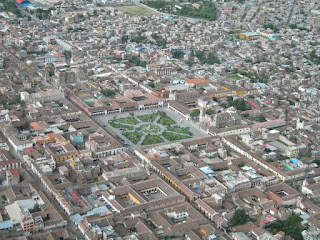Algunas vistas aéreas del Perú
Quizás pronto sean fotos tomas
desde el satélite peruano Chasqui II, desarrollado en la Universidad Nacional de
Ingeniería, UNI.
El mapa del Perú desde el espacio.
Se aprecian el mar de Humboldt, la
costa, sierra y selva. El lago Titicaca siempre es visible en cualquier escala
del mapa del Perú. Impresionante.
En primer lugar, algunas vistas de la capital del Perú, Lima, una
ciudad privilegiada por estar a orilla del mar.
Miraflores, uno de los
distritos a orillas del mar. Estupendas fotografías
Callao, el primer puerto del Perú unido a la capital, Lima. Falta desarrollo y su capacidad
es limitada por falta de decisión política y firmeza en las autoridades. La punta,
la puerta de entrada de los inmigrantes italianos
que luego aportaron su cultura e ingenio
al Perú. Se aprecia la Fortaleza del Real Felipe, último reducto de los española
antes de retirase para siempre del Perú, una colonia a la que habían depredado durante
300 años.
Al Norte, Caral es el
tercer lugar más antiguo del mundo, contemporáneo con las pirámides de Egipto,
está ubicada en medio de montañas a 190 Km al Norte de Lima. Es la civilización
más antigua de América y posee una antigüedad aproximada de 5,000 años.
Al sur de Lima, en Ica podemos encontrar
las Líneas de Nazca, que se conservan gracias al trabajo abnegado de doña María Reiche, alemana que amo al Perú
con intensidad.
La laguna de Huacahina, único oasis en América.
Arequipa, la ciudad rebelde e indómita,
llamada Ciudad Blanca por el material de construcción, el sillar empleado profusamente
en la capital histórica.
El volcán Chachani a 55 kilómetros, Pichu Pichu a 32 kilómetros y el imponente Misti a
solo 17,5 kilómetros de la Plaza de armas. Hay más volcanes, pero éstos son los
más cercanos.
El cañón de Cotahuasi, Arequipa, es el cuarto
cañón más profundo del mundo con una profundidad de 3,535 metros; es sólo superado
por el Cañón de Yarlung Tsangpo con 5,590 metros, Cañón de Apurímac con 4,691
metros, Cañón de Kali Gandaki con 4,375 de profundidad.
Ayacucho, la ciudad donde se consolidó la independencia
del Perú. Una magnífica fotografía aérea. Se observa la Catedral y la Municipalidad. Es una ciudad que tiene 33
iglesias coloniales, aunque es una pena que no todas están en buen estado. Pero
vale la pena verlas y apreciar la original forma de construcción de los retablos en la Catedral. No sé si en otros lugares del mundo se hacen
estos retablos, que parecen vencer a la
gravedad, pero no hay nada como verlos de cerca. Y quedar asombrado.
Cusco, la capital de los incas siempre
misteriosa, siempre mágica. Se observa las imponentes iglesia coloniales.
Machu Pichu, desde tierra o desde el aire siempre
es interesante.
Puno, el lago más alto del
mundo. Es navegable y pertenece a dos países, Perú y Bolivia.
En Lambayeque, cuna de importantes
culturas prehispánicas, se aprecia el Museo del Señor de Sipán, con una arquitectura que se asemeja
a una pirámide pre inca y que alberga
importantes tesoros de la cultura Mochica.
Hay más de 2000 piezas de oro, además de
cerámica y ajuares funerarios.
Si no hay mayor cantidad es por la acción depredadora de saqueadores de tumbas que
durante decenios casi acabaron con los vestigios
Los Andes en la Cordillera Blanca muestran los imponentes
nevados y las hermosas lagunas. Lástima que con el calentamiento haya retroceso
en los glaciares y pérdida de masad de agua.
La selva siempre hermosa, siempre misteriosa.
La nota negra. En el sur, en Madre de Dios hay
algo que mostrar por ahora pero con la acción depredadora de mineros ilegales, protegidos
y en complicidad con las autoridades, indolentes, se va acabando con todo
rastro de belleza. Lo que sucedió en Brasil Bento Rodríguez, se repite con más
fuerza en el Perú.
Los pueblos pequeños también tienen su encanto.
San Miguel , Cajamarca, al norte del Perú, lugar donde nací. Las fotografías fueron
tomadas con un drone.
https://www.youtube.com/watch?v=jqqCF0PhTNM























































